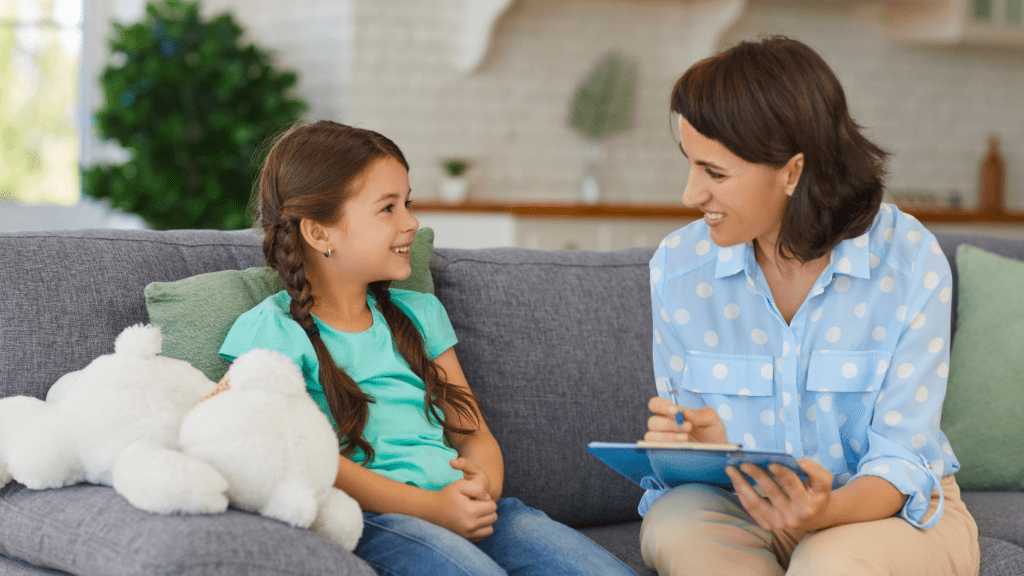Navigating grief in blended families can be a complex journey, especially when it comes to supporting children through loss and change. As a parent or caregiver in a blended family, I’ve witnessed firsthand the unique challenges that arise when helping children cope with grief.
In this article, I’ll share insights and strategies to assist children in blended families as they navigate the emotional rollercoaster of loss and adaptation. Grief is a natural response to change and loss, but in blended families, it can take on additional layers of complexity.
Drawing from my own experiences and expertise, I’ll explore how to create a supportive environment where children feel heard, understood, and empowered to process their emotions. By understanding the nuances of grief in blended families, we can better equip ourselves to guide children through these challenging times with compassion and resilience.
Exploring the Concept of Grief in Blended Families
Understanding grief in blended families is crucial for supporting children through challenging times. In my experience, the concept of grief in these families can be multifaceted due to the complex dynamics involved.
Blended families often face unique situations that can impact how children cope with loss and change. In blended families, children may experience grief not only from the loss of a parent due to divorce or separation but also from adjusting to new family structures and relationships.
This layered grief can manifest in various ways and requires a sensitive approach to help children navigate their emotions effectively. The dynamics of blended families can complicate the grieving process for children.
As a parent or caregiver in a blended family, it’s essential to recognize that each child may experience grief differently based on their age, personality, and relationship with the individuals involved. By acknowledging these differences, we can tailor our support to meet the specific needs of each child.
Moreover, grief in blended families can be ongoing as children adjust to new living arrangements, step-siblings, or the presence of new parental figures. This prolonged grieving process highlights the importance of creating a supportive and understanding environment where children feel safe expressing their emotions without judgment.
In exploring the concept of grief in blended families, it’s crucial to approach the topic with empathy and patience. By recognizing the complexities of grief within the context of a blended family, we can better assist children in coping with their emotions and fostering resilience during times of loss and change.
Impact of Loss and Change on Children in Blended Families
- Recognizing Feelings of Loss: Acknowledge that children may experience grief over lost family dynamics, and provide a safe space for them to express their emotions.
- Encouraging Open Dialogue: Foster open conversations about their feelings and experiences, helping them articulate their thoughts and feel understood in their new family structure.
Here, I delve into the specific areas where the impact of loss and change manifests in children within blended families.
Emotional Challenges Faced by Children
In blended families, children may grapple with a myriad of emotions such as confusion, sadness, and even resentment. It’s essential to recognize that these emotions are normal reactions to the significant changes they are experiencing.
By acknowledging and validating their feelings, caregivers can create a safe space for children to express themselves.
Behavioral Changes in Children
The impact of loss and change in blended families can also manifest in various behavioral changes in children. These changes may include acting out, withdrawal, or displaying unexpected emotions.
Understanding that these behaviors are often a child’s way of processing their emotions can help caregivers respond with empathy and patience. Establishing open communication channels and offering consistent support are key in managing and addressing these behavioral changes effectively.
Strategies to Support Children in Coping with Grief
Open Communication and Emotional Expression
In supporting children through grief in blended families, it’s crucial to prioritize open communication. Encouraging kids to express their emotions freely creates a safe space for them to process their feelings.
By validating their emotions and actively listening to their concerns, caregivers can help children navigate the complexities of loss and change effectively. This approach allows children to feel heard and understood, fostering trust and emotional resilience.
Importance of Establishing Stability and Routine in Blended Families
Navigating grief in blended families can be particularly challenging for children. As a writer who has delved into the complexities of supporting children through loss and change, I understand the significance of establishing stability and routine in these families.
Blended families often bring a multitude of changes, from adjusting to new living arrangements to forming relationships with stepparents and stepsiblings. As a result, children may experience heightened levels of confusion, sadness, and resentment.
In such turbulent times, stability and routine play a crucial role in providing a sense of security and predictability for children amidst the upheaval in their lives. By maintaining consistent routines, such as fixed meal times, bedtime rituals, and designated family activities, children in blended families can find comfort in the familiar structure that helps them navigate the uncertainties brought about by loss and change.
When everything else seems to be in flux, a stable routine can serve as a grounding anchor for children, offering a sense of normalcy and reliability in their daily lives. Ensuring stability through consistent routines not only fosters a secure environment for children but also helps in building resilience as they cope with grief.
When children know what to expect each day and have a sense of stability in their routines, they are better equipped to handle the emotional challenges that come with loss and change. In blended families where dynamics may vary, establishing stable routines can create a sense of cohesion and unity, fostering a shared identity and strengthening the bonds among family members.
Through the consistency of routines, children can feel a sense of belonging and develop a greater sense of security as they navigate the complexities of grief within their blended family dynamic. Stability and routine are foundational pillars in supporting children through grief in blended families.
By establishing predictability and structure in their daily lives, parents and caregivers can provide children with the stability they need to navigate the emotional turmoil of loss and change effectively.




